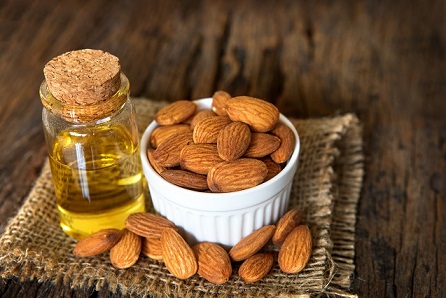 Human civilisation has evolved a lot since 4000 years ago. You don’t have to worry about disease, you don’t have to worry about the river Nile being invaded by frogs. You don’t get to battle enemy empires with swords anymore (unfortunately).
Human civilisation has evolved a lot since 4000 years ago. You don’t have to worry about disease, you don’t have to worry about the river Nile being invaded by frogs. You don’t get to battle enemy empires with swords anymore (unfortunately).
The average guy isn’t terrified of a giant hand appearing and shooting a thunderbolt down from the heavens if he slips up and commits the tiniest sin. We can drive at 90mph rather than crossing the desert in scorching heat on horseback.
But one aspect of civilisation which has never changed is acne.
Many believe that acne is a modern disease, the symptom of an unnatural way of life which is out of tune with our jungle and cave dwelling roots. In many ways it is, but in Ancient Egypt teenagers feared acne. Ancient Greeks, Romans, and English teenagers in Elizabethan times were just as hungry for acne remedies as we are today.
Unless we discover some cave paintings, we’ll never know whether prehistoric cavemen had acne, but it’s been proven that pimples have been around since the very start of civilisation. Accutane and benzoyl peroxide were thousands of years away, so instead teenagers had to rely on the wise, bearded old medicine men. Every remedy was a home remedy and they utilised all the natural plants, metal ores, salts, and minerals they could.
Some of those treatments remain popular even now. Others, meanwhile, have faded into oblivion, having been useless from the start.
There’s a lot of knowledge to gain by analysing the ruling empires of the day. With 4000 years of acne data at our fingertips, it would be foolish to dismiss the Egyptians, Greeks and Romans as being backwards. Scientific studies are great, but it’s a lab environment, vulnerable to corporate money funding or mistakes which make the results inapplicable to reality.
Experience reigns supreme at the end of the day, and I always advise acne patients to experiment. Ancient civilisations produced their acne treatments based almost entirely on first-hand experience, with a few mumbo jumbo religious theories mixed in. That said, there are plenty of failed theories and ancient scams as well.
Ancient Egypt
We know that acne was a feature of the land of pyramids and pharaohs because of the hieroglyphs that say so, showing the word “akut”, which means boils or papules.
The short-lived teenage emperor Tutankhamun was known to suffer from acne. His tomb was found to contain offerings of favoured acne remedies, in order to keep his skin clear in the afterlife. Tutankhamun ruled Egypt from 1332 BC – 1323 BC. Hopefully, the plan worked and the bloke is finally acne-free. Several ancient texts also described attempts by servants to clear the skins of pharaohs.
One of the favoured treatments was our old favourite raw honey. The Egyptians invented the practise of applying honey to an individual inflamed spot. The Ebers Papyrus medicinal text dating back to 1500BC recommended honey and animal preparations for inflammatory swelling, boils and pustules.
Alongside honey, the most popular physical remedy was a mask of sulphur, for drying out the skin. This is pretty interesting, because you can buy creams and soaps containing sulfur even today. The theory goes that sulphur can exfoliate the skin, reduce oil production, and kill p.acnes bacteria. The Pharaohs and palace medical men had no idea of what p.acnes bacteria was, but the visible effects of sulphur showed them the way forward.
Read Annihilate Your Acne – get the diet that could transform your skin!
Not surprisingly, there was plenty of superstition too. Acne was widely believed to be caused by displeasing the gods. Around the 3rd century BC, lying was said to trigger a pimple outbreak. The proscribed remedies were magical spells and charms.
Other common skincare ingredients included myrrh and sour milk, so clearly the fear of dairy hadn’t taken hold yet. Speaking of which, there’s plenty of evidence that the Ancient Egyptians drank milk and there are texts suggesting that they ate butter; if they had the technology to manufacture butter then dairy was obviously a significant part of their diet.
Salt was another ingredient, with the Dead Sea and its rich salt waters being very close by to Egypt. It makes a lot of sense; with all the wars against Ancient Greece, the Egyptians would have known of salt’s disinfectant properties. They used it time and time again to keep sword wounds from resulting in an amputated leg. Acne looks like an infection to the naked eye, so the next step would be applying salt to it.
Probably the most famous skincare ingredient in Ancient Egypt was aloe vera; Nefertiti and Cleopatra both utilised it in their beauty regimens.
The knowledge we can gain – raw honey and aloe vera are popular acne treatments even today, with countless glowing testimonials. Firstly, this history shows just how effective they are.
Secondly, this demonstrates why first-hand experience is a great thing. The elites of Egyptian society utilised aloe vera well over two thousand years ago. In the year 2014, thousands of years later, a study confirmed that aloe vera could lower acne levels massively when added to topical retinoids.
The old human instinct for superstition was around back then. Today the popularity of detox therapies, lemon juice, and baking soda is a sign that people instinctively love home remedies and strategies. In any era, there are fake acne treatments to watch out for.
Their consumption of dairy might demonstrate that dairy sensitivity is an innate part of the human body. Alternatively, other aspects of their diet might be to blame for their acne; the Egyptians were known to be heavy bread eaters as well.
Ancient Greece
By the era of Ancient Greece the superstition was still rampant. A physician called Theodosius wrote that acne lesions could be treated by watching a falling star while wiping your face with a cloth; performing the action perfectly would result in the pimples falling from your face.
Nobody has ever disproved this, so you never know! Persuade one of your friends to stay up for 12 hours and wait for a shooting star.
Acne was just as prevalent in Ancient Greece as it was in Egypt. The word acne was invented by the Greeks, derived from “akme”, which mean “spot”.
The legendary Greek doctor Hippocrates wrote about acne, as did the philosopher Aristotle. The home remedies were similar to the Ancient Egyptians. Numerous mentions of honey face masks have been found.
Next – the 6 best vitamins and minerals for naturally clear skin
In fact, one medicinal text specifically recommended honey for softer acne, whereas a harsh soap containing sulphur was recommended for hard pimples. Sulphur masks and soaps were favoured once again. In general, the natural treatments utilised in Ancient Greece were similar to those of Ancient Egypt.
What we can learn – the consistency between ancient Greece and Ancient Egypt shows that honey and sulphur may indeed work for acne. Both treatments stand up well today, in studies and experiences.
Compare that to the mercury makeup we’ll discuss later, which faded out of fashion fast. People knew what they were doing even if they lacked test tubes and labs.
The Roman Empire
 Acne remained prevalent among teenagers of the glorious or at least briefly glorious Roman Empire. The Romans were first to connect the disease to puberty, by the 3rd century AD. The word acne was first printed in the Roman era, changed from “acme”.
Acne remained prevalent among teenagers of the glorious or at least briefly glorious Roman Empire. The Romans were first to connect the disease to puberty, by the 3rd century AD. The word acne was first printed in the Roman era, changed from “acme”.
In his medical texts, the Roman physician Cornelius Celcius had this to say: “To treat pimples and spots and freckles is almost a waste of time, yet women cannot be torn away from caring for their looks. But of these just mentioned, pimples and spots are commonly known, although that species of spot which is called by the Greeks semion, since it is rather red and irregular. But pimples are best removed by the application of resin to which not less than the same amount of split alum and a little honey has been added”.
This stage in human history is where we have first have some serious variety in the recorded home acne remedies. Once again, the honeybees are in business. Alum is a rock composition found naturally in the earth which is still sold as a post-shaving balm for calming irritation.
Meanwhile, teenagers with acne were sent to the famous baths built across the Roman Empire. Physicians believed that skin pores could be cleansed of dirt and grime due to the sulphur composition of the waters (there’s the sulphur again).
Even crocodile meat was considered to be an acne remedy. The Romans had a whole cult which was obsessed with crocodiles. When they annexed the territory of Egypt, troops were sent to the shores of the Nile and encountered native Egyptian tribes which worshipped the Nile crocodile subspecies.
7 natural topical treatments which could transform your skin
The hardy Roman soldiers also began to revere the aggressive, carnivorous crocodile. They began to manufacture armour, helmets and weapons out of the tough hide; consequently there was a big supply of crocodile meat flowing into the rest of the Roman Empire. Physicians liked to combine the meat with Cyprus oil for usage as an acne remedy.
Taking a bath with types of oil and sour cheese was also recommended, as was rubbing leek leaves all over your face. The Romans also had a strong trading relationship with the Indian subcontinent and hence the spice industry boomed; cinnamon was a popular spice which ended up being applied to pimples.
Any interesting knowledge? – There’s many interesting facts on specific remedies. The powers of honey are reinforced again, and cinnamon was confirmed nearly 2000 years later to strengthen the skin.
Today, people flock from all over the world to treat skin conditions by bathing in the mineral-rich waters of the Dead Sea; the principle of bathing for acne has some similarities. We can see the superstition creeping in again with the crocodile meat remedy. There’s no evidence that it would work, but the practise has similarities with the cult of raw foods, or the fruitarian diet.
The acne remedies of the Roman era reinforce what we’ve seen before – the best acne treatments rise to the surface. Raw honey endured, crocodile meat was never heard from again.
The middle ages to the industrial revolution
By the 1500s, the acne-sphere was just as interesting. From previously having had some very prescient home remedies, skincare slipped backwards remarkably, maybe as an aftereffect of the dreaded dark ages.
Both raw honey and sulphur had endured ever since Ancient Egypt. Among middle class people, sulphur soap remained as an old favourite.
However, in Elizabethan times the top fashion among women was to have an extremely pale, delicate looking complexion, maybe to mimic all those ancient portraits of Queen Elizabeth 1st. The solution for ordinary women was Venetial Ceruse, a thick, white lead-based paint.
There was also a trend of using mercury make-up, a touted revolution in skincare which would replace sulphur and wipe out acne and blemishes better than anything. That was what the adverts said, but mercury is one of the most deadly compounds on planet earth. It reduces your IQ and it inflames acne. The inventor deserves a pat on the back for a good business idea, even if it was a scam, but that’s it.
After the hard evidence-based methods of the Roman era, the superstition had crept back in. Everybody was terrified of witches and they got the blame for acne as well.
The middle ages also marked the dawn of urine therapy, the treatment which sounds so crazy that it just has to work. Urine therapy and specifically the urea does have some benefits for clogged pores, but I don’t even want to mention them, in case you get tempted to use it. A common recommendation was to rub baby’s nappies on your face.
The industrial revolution is considered to have started by roughly 1750, but it’s clear that acne was prevalent among teenagers well before then. Medicinal texts from 1714 reported that physicians considered treating a minor condition like acne to be beneath their dignity.
Overall, the Middle Ages were a poor time for acne. The bright spot was the discovery of the link between hormones and acne. Dr Jonston associated acne with disorders of menstruation in 1648, and sexual activity later in 1648. We have early signs of the connection between DHT and acne, and estrogen and acne.
Zinc – the number one mineral for clear skin (reduces acne by 49.8%)
The knowledge – it’s clear that the wheels of progress will not always turn. For acne, the middle ages were a massive step backwards from the Roman era.
The Romans had decent amounts of science and proven remedies for acne; by 1500, superstition reigned supreme. In the 21st century we have more scientific studies on acne than ever, but corruption has no boundaries and you never know when the failed home remedies will return.
More evidence – diet is the cause of acne
 Wherever human civilisation goes, acne follows. The history books might make you believe that humans were born to have acne. Pessimists might revive the age old theory that humans are the only land mammal without thick body hair, and our skin hasn’t adapted to it yet…
Wherever human civilisation goes, acne follows. The history books might make you believe that humans were born to have acne. Pessimists might revive the age old theory that humans are the only land mammal without thick body hair, and our skin hasn’t adapted to it yet…
…but we have no understanding of cavemen from 12,000 years ago and earlier. Furthermore, traditional hunter gatherers like the Kitavans or Brazilian rainforest tribes have almost completely clear skin.
The opposite theory is that the industrial revolution (c. 1750) and all of its belching factories created acne, but the history books disprove it. For that reason, we know that toxic chemicals aren’t the sole cause of acne, whether it’s air pollution or phthalates in make-up. Toxins are important, there’s no doubt about it, but the Greeks didn’t have to worry about a toxic shaving lotion.
Overall, this reinforces how diet is the main cause of acne. The Egyptians had already become addicted to bread and dairy; that could be why their skin began to pay the price.
The Romans loved cheese, and in general, dairy has only been eaten since the dawn of civilisation. Making a loaf of bread from the wheat kernel was impossible until the agricultural revolution.
Conclusion
If you’re a smart person then hopefully, you can draw your own conclusions from this article. Reread and you might have a brain wave.
Maybe in 2000 years time, if our civilisation goes the way of the Romans, our tactics for acne will be investigated by some future species of human.
A bunch of futuristic humans with skinny frames, no body hair, and heads the size of boulders might be scanning old internet blogs and wondering why anybody wanted to use baking soda for clearing acne. Of course, that’s if the internet magically stays in circulation while everyone else is dead.
I suspect that Accutane will bite the dust and they’ll wonder why we ever used a treatment with such toxic side effects (read the article here). They could also read the glowing testimonials for raw honey, and maybe the articles being written today will spark off a whole new acne craze centuries down the road. Who knows?
NEXT: discover the root causes of acne and banish your pimples forever
Thanks for reading!